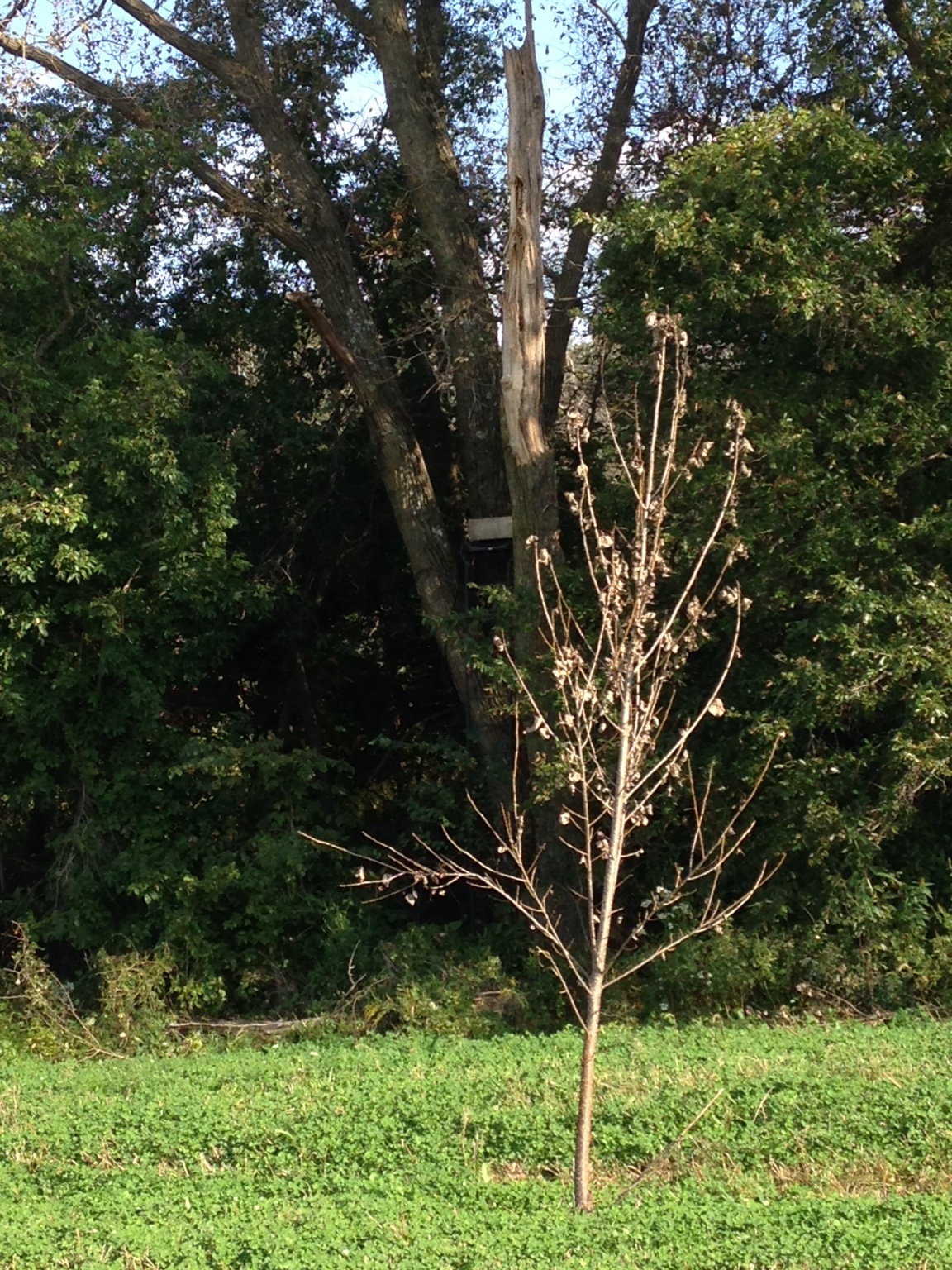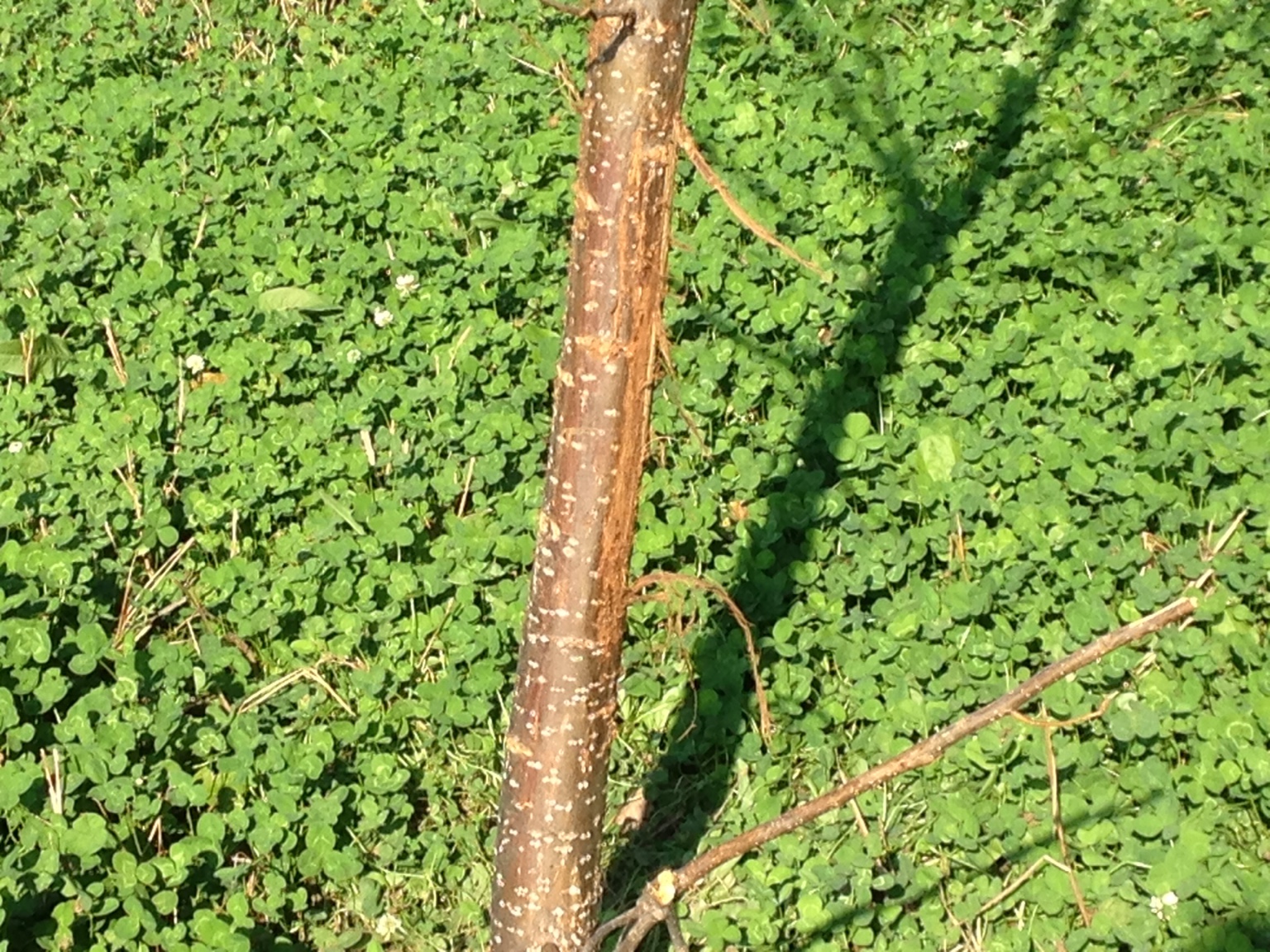John-W-WI
Administrator
Here is how we planted some giant (living) cuttings in the spring to create rubbing posts for the deer to use as a social gathering point. These are planted inside of a foodplot preferably in range of a stand to draw attention of any deer that enters the field. I assure you that everything from fawns to mature deer can't resist checking it out. The more obvious it is, the more likely the deer are to visit it. Don't try to hide it, put it right out in the open for all of the deer to see.

The idea behind rubbing posts is to draw deer to a known location near a treestand. Think 20 yards off the edge of a field in front of one of your favorite setups. The idea of cutting down a basswood tree and ‘planting’ it in the field has been used by many people for the last few years. The problem is, the basswood tree is only good for one season. And you usually have to add the licking branches manually with some lumber and fasteners. We were hoping to come up with a way to plant a permanent rubbing post. Below you will read about our success and failure with this experiment.
In the spring of 2014 the cutting crew planted some really big cuttings. We used 3 year old Hybrid Poplars that had been planted too close together and needed to be thinned. We cut them off at the ground giving us a really big cutting to plant.

20+ foot cutting, ready to plant.
Having never planted a cutting this large before, we didn’t know what to expect. We’ve planted 6 footers before, but nothing this big!

We made the holes as deep as possible. With the bobcat we were able to get 3.5 – 4′ deep. You could dig these holes by hand, it would just take a little longer. The hole would only need to be big enough to insert the cutting.

18″ auger making the planting hole.
The planting site had 6″ of top soil, then almost pure sand. Fortunately the water table is high. The cuttings should get plenty of water throughout the growing season.

Hole, ready to accept the cutting.
Next we simply stuck the cutting in the hole, and back filled with the original dirt.

Back filling the hole with the original soil.
Water began filling the hole before we were done back filling. Because this was early spring and the snow just melted, the water was close to the surface. This site isn’t as wet later in the season (although we didn’t mind at planting time!)

Almost done back filling. The water didn’t hurt either!
The trees did well all summer. We had a very wet season which didn’t hurt. In a dry year some ground cover around the trees might be necessary, but we got enough rain that we didn’t have to worry about it. We mowed around them a time or two, other than that they were left alone all summer.
Around the 1st of September, we tied the branches down (left) for licking branches and bent the tree with no branches (right) down for one big licking branch.

Branches tied down, ready for the deer.
The tree on the right was a total failure. I believe a bear checked it out one too many times and broke it off at the bend.
The tree on the left did really well. The deer responded as soon as the antlers started to harden off. I placed a wireless camera nearby so we could keep an eye on things from a distance without disturbing the site.

The camera, external high capacity batter, and antenna hid on the edge of the corn.
Interestingly enough, a doe was the 1st to check it out after tying the branches down.


The idea behind rubbing posts is to draw deer to a known location near a treestand. Think 20 yards off the edge of a field in front of one of your favorite setups. The idea of cutting down a basswood tree and ‘planting’ it in the field has been used by many people for the last few years. The problem is, the basswood tree is only good for one season. And you usually have to add the licking branches manually with some lumber and fasteners. We were hoping to come up with a way to plant a permanent rubbing post. Below you will read about our success and failure with this experiment.
In the spring of 2014 the cutting crew planted some really big cuttings. We used 3 year old Hybrid Poplars that had been planted too close together and needed to be thinned. We cut them off at the ground giving us a really big cutting to plant.

20+ foot cutting, ready to plant.
Having never planted a cutting this large before, we didn’t know what to expect. We’ve planted 6 footers before, but nothing this big!

We made the holes as deep as possible. With the bobcat we were able to get 3.5 – 4′ deep. You could dig these holes by hand, it would just take a little longer. The hole would only need to be big enough to insert the cutting.

18″ auger making the planting hole.
The planting site had 6″ of top soil, then almost pure sand. Fortunately the water table is high. The cuttings should get plenty of water throughout the growing season.

Hole, ready to accept the cutting.
Next we simply stuck the cutting in the hole, and back filled with the original dirt.

Back filling the hole with the original soil.
Water began filling the hole before we were done back filling. Because this was early spring and the snow just melted, the water was close to the surface. This site isn’t as wet later in the season (although we didn’t mind at planting time!)

Almost done back filling. The water didn’t hurt either!
The trees did well all summer. We had a very wet season which didn’t hurt. In a dry year some ground cover around the trees might be necessary, but we got enough rain that we didn’t have to worry about it. We mowed around them a time or two, other than that they were left alone all summer.
Around the 1st of September, we tied the branches down (left) for licking branches and bent the tree with no branches (right) down for one big licking branch.

Branches tied down, ready for the deer.
The tree on the right was a total failure. I believe a bear checked it out one too many times and broke it off at the bend.
The tree on the left did really well. The deer responded as soon as the antlers started to harden off. I placed a wireless camera nearby so we could keep an eye on things from a distance without disturbing the site.

The camera, external high capacity batter, and antenna hid on the edge of the corn.
Interestingly enough, a doe was the 1st to check it out after tying the branches down.




